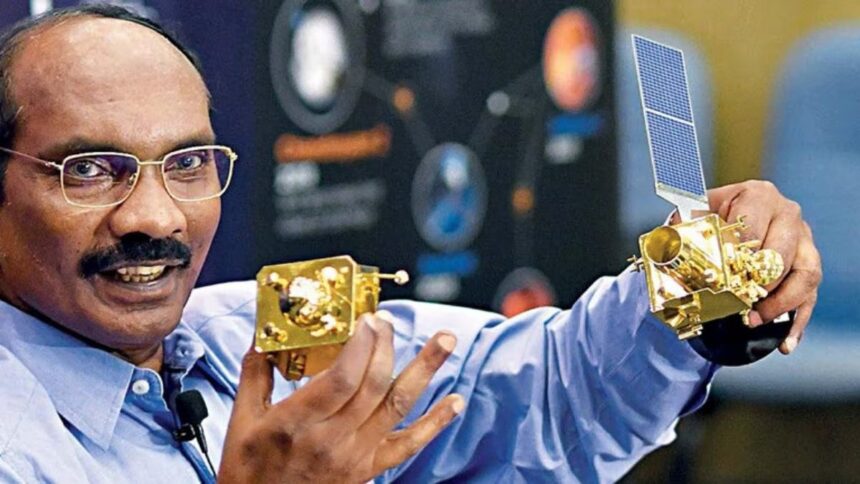Dr K Sivan, former chief of the Indian Space Research Organisation (ISRO), revealed recently that he was not hired at the space agency in his first attempt. While speaking with students at the ninth convocation of the National Institute of Technology (NIT) Goa, the former ISRO chairman recalled that he actually wanted to become a school teacher but ended up becoming the chairman of the space agency.
Dr Sivan added that after completing his masters course, he went to ISRO’s satellite centre to get a job but was instead told to “get lost”.
“After BE, I thought I will go for a job, but job was not easy to get. At the same time, I was very passionate to do my masters. After my masters, I went to the satellite centre to get the job. They said, ‘You are a useless fellow, you are not getting job. You get lost’. Finally, I became chairman of the same centre…Because I did not get a job in the satellite centre, I got a job in the rocket centre,” Dr Sivan said.
Going further, he also recounted that he was called the “highest-grade fool” by his friends, colleagues and seniors for taking up the role of project director of the “four-time failed” Geosynchronous Satellite Launch Vehicle (GSLV) project.
Sivan also said that all his friends and seniors were offering condolences instead of congratulating him, but he made the GSLV project a success. He also said that the success of the GSLV made him visible to the ISRO community, while adding that leading the GSLV project made him the chairman of ISRO.
“In my career, I learnt one thing. If something is denied for you, something bigger and better is waiting for you,” he said. While the GSLV project was a resounding success, the same cannot be said about ISRO’s ambitious Chandrayaan-2 mission.
Chandrayaan-2 mission was sent to the space on July 22, 2019 and was declared a failure after its lander Vikram and rover Pragyan crashed on the Moon’s surface on September 7, 2019. Recounting how the space agency converted the crushing setback into a stellar comeback, Sivan said that Chandrayaan-3 was defined after the failure of Chandrayaan-2.
He further said that he got the approval to go ahead with Chandrayaan-3 despite the failure of Chandrayaan-2 from Prime Minister Narendra Modi himself.
“When you see Chandrayaan-2’s failure, we did not keep quiet. Just next day of the Chandrayaan-2 failure, we defined Chandrayaan-3. It is not because of failure that we just kept in a corner. We defined the Chandrayaan-3 next day itself. The following day, I got approval from the honorable Prime Minister to go ahead with the project,” Sivan said.
He also said that PM Modi not only gave the go ahead for the lunar mission but also encouraged the team at ISRO. Sivan added that the team at ISRO also took learnings from what went wrong with the 2019 lunar mission and were unhappy for that moment.
“We learnt what went in Chandrayaan-2… we were unhappy for that moment, but in the next moment, you have to rise to the action and do it. And now, you can see the success of Chandrayaan-3,” he said.
On August 23, 2023, Chandrayaan-3 scripted history as it landed smoothly on the lunar South Pole and touched down on the location known as the ‘Shiv Shakti Point’. With this feat, India became the first country to land on the Moon’s South Pole.
About Dr K Sivan
Born in April 1957 to a mango farmer in Tarakkanvilai village of Kanyakumari, Sivan completed his schooling from a Tamil medium school. Sivan became the first graduate from his family after completing his bachelor’s degree in aeronautical degree from the Madras University of Technology in 1980.
In 1982, he got a master’s degree in aerospace engineering from the Indian Institute of Science in Bangalore and started working with ISRO. He has also earned a doctoral degree in aerospace engineering from IIT Bombay in 2006.
At ISRO, Sivan worked on the polar satellite launch vehicle (PSLV) project and contributed to the planning, designing, integration and analysis of the mission. He has also worked in projects such as the GSLV and GSLV MkIII and was the project director of the GSLV rocket. Dr Sivan was also the ISRO chief when Chandrayaan-2 was sent to the space in 2019.
Also Watch: Chandrayaan-3, Aditya-L1, Gaganyaan, Mangalyaan-2, and more: Here’s the status of various ISRO missions
Also Read: IITians not joining ISRO, 60% students walked out of a recruitment drive after seeing pay structure: S Somanath
Also Watch: From minerals to environment: How ISRO’s Chandrayaan-3 expanded our understanding of Moon








